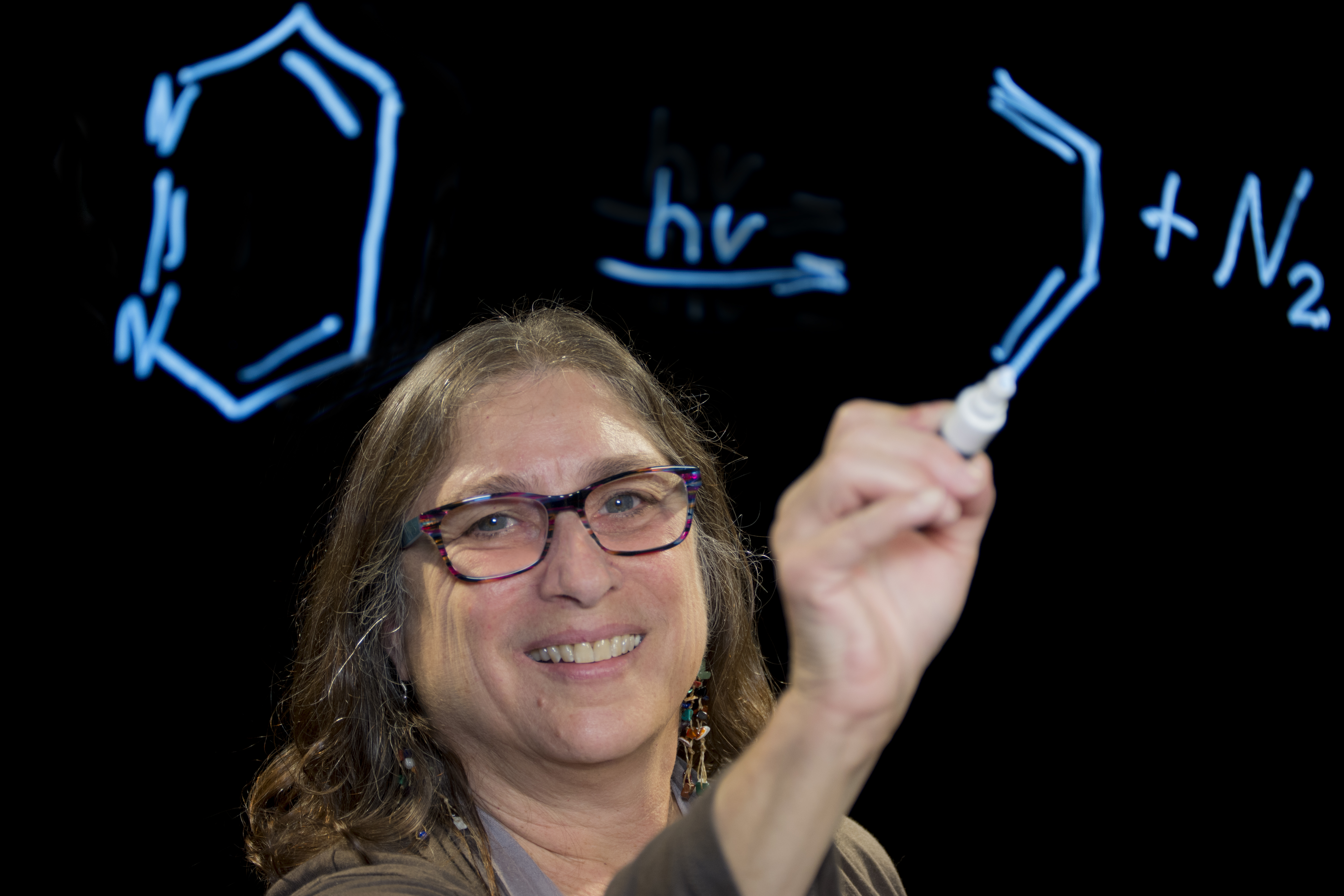An interview with alumna Jodye Selco

Jodye Selco came to UCI when F. Sherwood "Sherry" Rowland walked the halls of the building that would one day bear his name.
Our alumni take a part of UCI and the School of Physical Sciences with them when they graduate and leave campus. They take the memory of this place, and they share it, in their conversations, their work, their art — everything. This telling and retelling of the story of their time here is what creates and fuels the idea of UCI in the imaginations of people the world over, and so this month, on the one-year anniversary of our Brilliant Future campaign, we’re letting a couple of our alumni tell you a part of their — and, thus, UCI’s — tale.
PS: Please tell us your name and job title.
JS: Jodye Selco, Professor of Science Education and Chemistry at Cal Poly Pomona
PS: What was your major and degree while at UCI?
JS: I was a chemistry major, and I earned a B.S. in chemistry in 1979, way back when the trees in Aldrich park had just been planted and long before Reines Hall was built.
PS: What’re you doing now? Tell us about your job or career.
JS: I teach mostly chemistry courses, in particular General Chemistry and Physical Chemistry. However, I’m also a science educator and a chemistry educator — that means I’m sort of a Jack-of-all-Trades. I’ve been working with schools to improve the teachers’ teaching and the students’ learning of science. With the adoption of the Next Generation Science Standards (NGSS) by California, K-12 teachers are now expected to teach science as a hands-on endeavor. But most teachers are not ready for this, so I’ve been helping develop hands-on lessons and experiments for K-12.
One chemistry-related experiment developed for middle school to address the new NGSS standards was to design and build their own chemical hot or cold pack using Ziploc bags and chemicals that can be purchased on the open market.
I also have been interested in online learning – even before it became necessary as a result of the pandemic. Working with instructional designers at Cal Poly Pomona (one of which is now at UC Irvine!), I was able to learn about best practices in online teaching and website for course design. I’m indebted to them for helping me design an online course — and this is doubly true because when we needed to teach online last April due to the pandemic, I did not panic because I felt that I mostly knew what to do.
My job is an academic one at a university, which means that I teach, do research, and perform service for the campus and community. The academic unit I’m in (Center for Excellence in Mathematics and Science Teaching – CEMaST for short), values a variety of projects that integrate teaching, service and research. CEMaST also rewards as scholarly work and research a wide variety of activities. The chemistry games and simulations I’ve helped develop for learning chemistry topics are part of the body of work that is recognized as scholarly work.
(You can see examples here, here, and here.)
PS: What was your favorite UCI course or who was your favorite professor?
JS: My favorite professor at UCI was Sherry Rowland, who I did undergraduate research with when I was a student. I also enjoyed the courses taught by Robert Doedens and Hal Moore. (I guess it shows my age since none of them are still at UCI, either through retirement or death.) I also had two courses that were not chemistry, but made a big impression on me. One was “Introduction to Visual Perception,” which was a biological optics course, and the other was “Quantitative Political Science.” Both were quite math and science heavy, with applications in other areas that showed me the value of applying my science knowledge to the “real world.”
PS: Anything else you'd like to share — fun facts, hobbies, etc?
JS: Right now I’m spending all of my time teaching and trying to keep up with the grading of virtual paperwork; this seems to take much more time than it has in the past. When I have some free time, I’ve been doing some gardening (trying to remove an invasive weed at the moment), exercising, crocheting, quilting and driving around Southern California (which thankfully has been greatly reduced lately).
